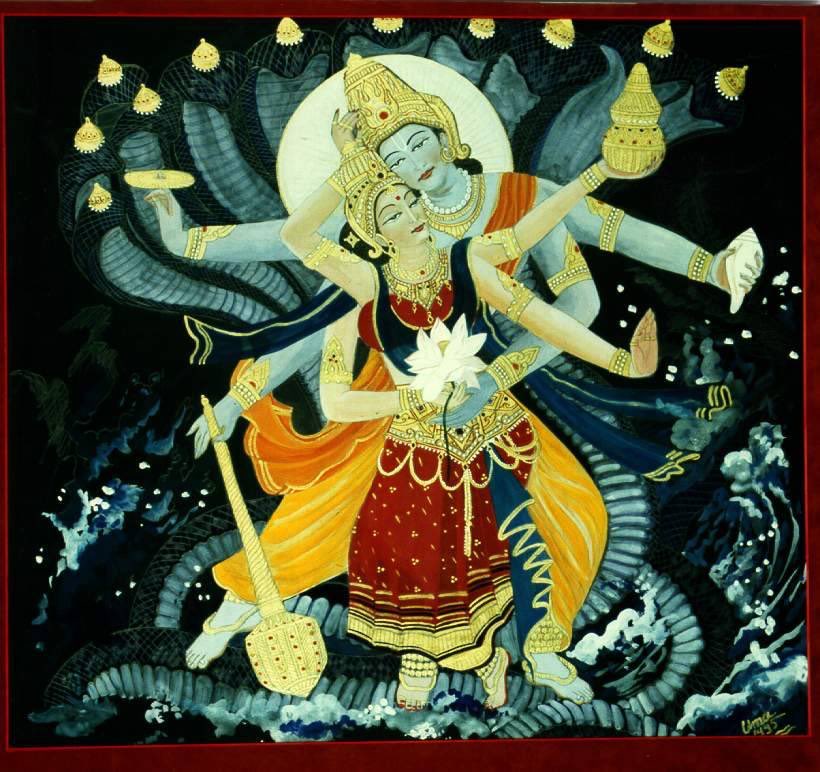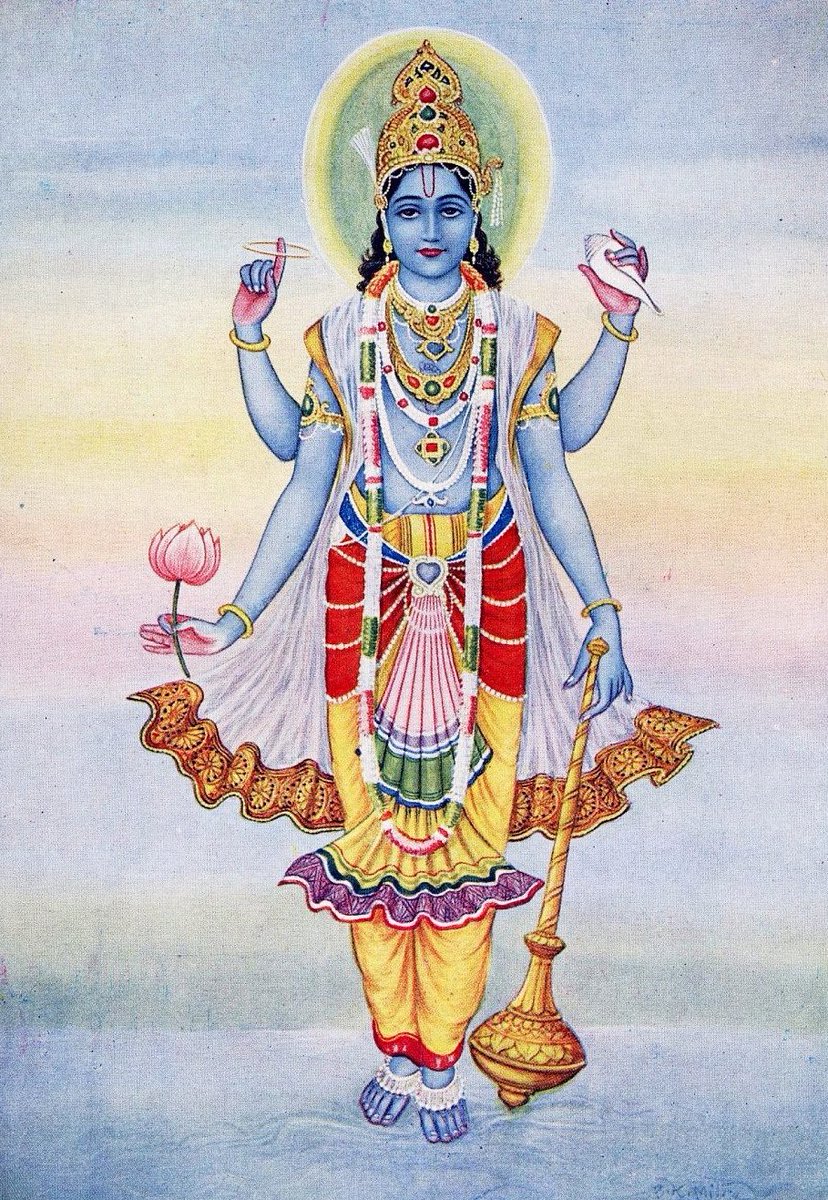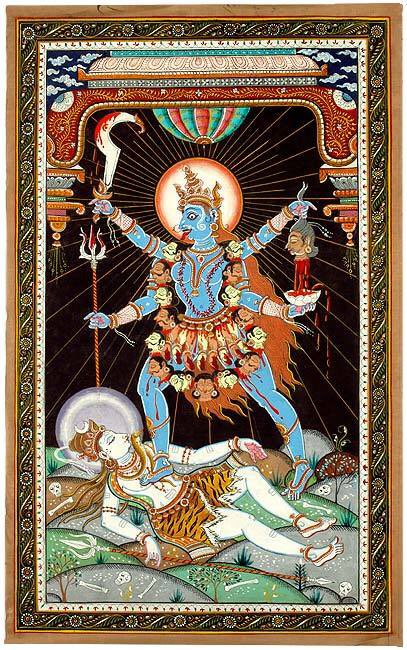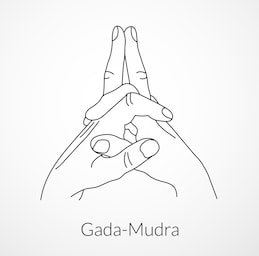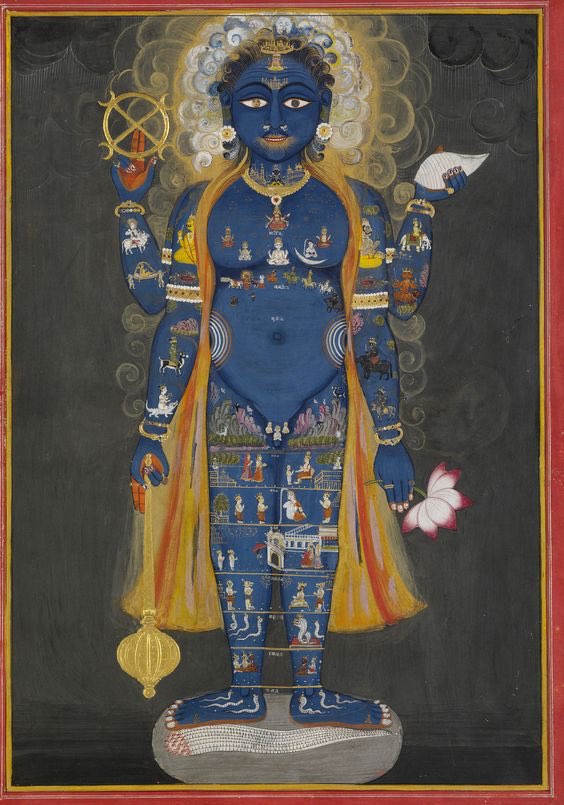Thread: Lord Vishnu& #39;s Gadā (Hindu Iconography)
According to the Agni Purāṇa, an asura called Gada was born to Kaśyapaprajāpati by his wife Diti. Viṣṇu killed Gada, and Viśvakarman made a weapon with his bone - which came to be known as Gadā.
According to the Agni Purāṇa, an asura called Gada was born to Kaśyapaprajāpati by his wife Diti. Viṣṇu killed Gada, and Viśvakarman made a weapon with his bone - which came to be known as Gadā.
The Gada is an āyudha (an indian club) held by Lord Vishnu in his lower left hand, and is a symbol of strength/power. Since the intellect is the highest power that exists, the gadā is therefore a symbol of intellect (buddhi) or the power of knowledge.
buddhirapyāste gadārūpeṅa mādhave ||
“The mace which Kṛṣṇ wields is the Intellect.” (Vishnu Purana, 1;22;68.)
“The mace which Kṛṣṇ wields is the Intellect.” (Vishnu Purana, 1;22;68.)
गदा च कालिका साक्षात् सर्वशत्रुनिबर्हिणी ।
(gadā ca kālikā sākṣāt sarvaśatrunibarhiṇī)
“(Krishna’s) mace is Kāli herself, the power of time, and it destroys everything that opposes it.”
Krishnopanishad 23
(gadā ca kālikā sākṣāt sarvaśatrunibarhiṇī)
“(Krishna’s) mace is Kāli herself, the power of time, and it destroys everything that opposes it.”
Krishnopanishad 23
The Gadāmudrā is described in the Īśvarasaṃhitā: “forming the fist with the right hand upon the thumb of the left thumb it shall be shown auspicious Kaumodakī. It is known gadāmudrā, which would crush an army of defects”.
Mūdra (eg., Gadā-mudrā) is so called as it gives joy to the tattvas in the form of karman for those who offer spotless worship, drive out the defects which move about within and without.
From SriMatham: Vaiṣṇava Iconology based on Pañcarātra Āgama
From SriMatham: Vaiṣṇava Iconology based on Pañcarātra Āgama
In his Viswarupa: “The conch represents the origin of primal sound OM, and the call Vishnu makes to draw the attention of man to His Higher Self. The club represents His power to inflict punishment or subdue; the discus represents the time (wheel of Time) that remains in Him...
and stands for mind, concentration, and control of body. The lotus flower is the symbol of purity and peace. The fully bloomed lotus also represents blossoming Vijnāna, intuitive divine wisdom in a man who turned a leaf and became a yogi. -[...]
Since he is the creator, his hands symbolize the evolving constituents of prakriti namely the mind, the intellect, the ego, and the consciousness.”
The Bhagavad-Gita: Translation and Commentary by Veeraswamy Krishnaraj
The Bhagavad-Gita: Translation and Commentary by Veeraswamy Krishnaraj
There are multiple references to Lord Vishnu& #39;s Koumodaki in the Mahabharata, Ramayana, Varaha Purana, etc. Its symbolism and iconography are also described in detail in the Vishnudharmottara Purana and the Gopala Tapani Upanishads.

 Read on Twitter
Read on Twitter